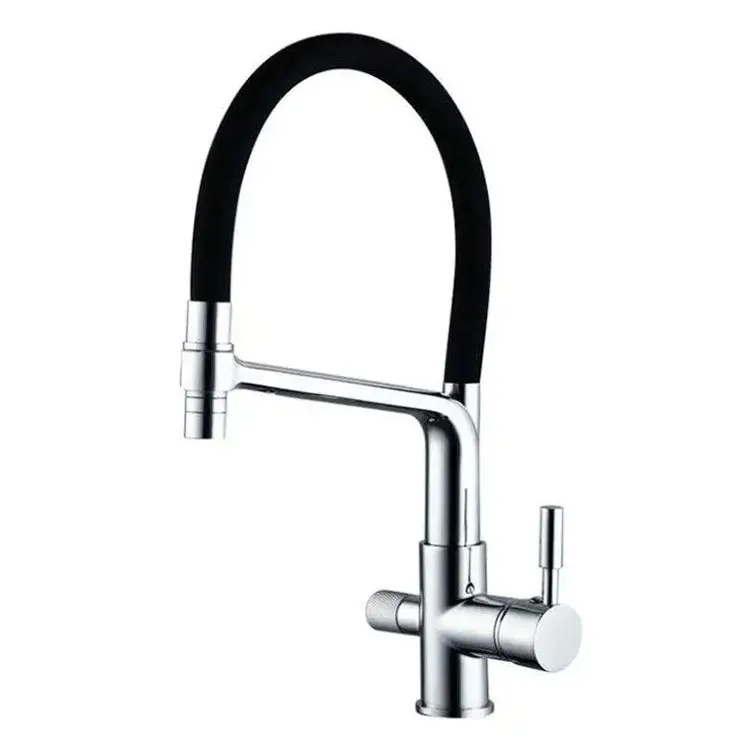The Importance of Faucet Maintenance: Tips to Extend the Life of Your Fixtures
2024-09-21
Faucets are an essential part of our daily routines, from brushing teeth and washing hands to cooking and cleaning. Despite their constant use, they are often overlooked when it comes to regular maintenance. Without proper care, faucets can develop issues like leaks, reduced water flow, or mineral buildup, which can lead to higher water bills and costly repairs. In this blog, we will discuss the importance of faucet maintenance and offer practical tips to help you extend the life of your faucets.
1. Preventing Leaks
One of the most common faucet issues is leaking, which can waste significant amounts of water over time. A dripping faucet can waste up to 3,000 gallons of water annually, which not only harms the environment but also increases your water bill. To prevent leaks:
- Check the O-rings and Washers: Over time, these small components can wear out, leading to leaks around the base or spout. Regularly inspect and replace these parts if they show signs of wear.
- Tighten Loose Handles: If your faucet handles feel loose or wobbly, tighten the screws or nuts that hold them in place. This can prevent leaks and ensure smooth operation.
- Fix Leaks Promptly: If you notice a leak, address it immediately. A small, inexpensive repair now can save you from more costly repairs or replacements later.

2. Cleaning and Removing Mineral Buildup
Hard water contains minerals like calcium and magnesium, which can accumulate inside your faucet, reducing water flow and causing blockages. Over time, mineral buildup can also affect the appearance of your faucet, leaving unsightly stains. To keep your faucet clean and functional:
- Soak the Aerator: The aerator is a small mesh screen at the tip of the faucet spout. Mineral deposits can clog this part, so remove it and soak it in vinegar for a few hours to dissolve any buildup.
- Use a Vinegar Solution: For stubborn mineral stains on the exterior of your faucet, soak a cloth in a mixture of vinegar and water, then wrap it around the affected area. After an hour, scrub gently with a brush or sponge to remove the stains.
- Invest in a Water Softener: If you live in an area with hard water, installing a water softener can reduce mineral deposits in your plumbing system, extending the life of your faucets.
3. Protecting Finishes
The finish of your faucet adds to the aesthetic appeal of your kitchen or bathroom. However, over time, finishes like chrome, brushed nickel, or matte black can dull or corrode if not properly maintained. To protect your faucet’s finish:
- Avoid Harsh Cleaners: Strong chemicals or abrasive scrubbers can damage the finish of your faucet. Instead, use mild soap and water or a vinegar solution to clean it.
- Dry After Use: Water spots and mineral stains can tarnish your faucet’s appearance. After using the faucet, wipe it down with a dry cloth to prevent water spots from forming.
- Polish Regularly: Polishing your faucet with a soft cloth can help restore its shine and keep it looking like new.
4. Maintaining Water Pressure
Over time, reduced water pressure can occur due to clogs in the faucet aerator or inside the faucet itself. To maintain optimal water pressure:
- Clean the Aerator: As mentioned earlier, mineral deposits can clog the aerator, reducing water flow. Clean it regularly to ensure proper water pressure.
- Inspect Water Supply Lines: Sometimes, low water pressure is caused by issues with the supply lines. Check for any kinks or blockages in the hoses that connect to the faucet and address them as needed.
5. Replacing Old Faucets
Even with regular maintenance, faucets eventually wear out. If your faucet is more than 10-15 years old, it may be time to consider a replacement, especially if you're noticing frequent leaks or other issues. Modern faucets are more water-efficient and offer advanced features like touchless controls, which can improve convenience and reduce water waste.
Conclusion
Proper faucet maintenance is essential to extending the life of your fixtures, ensuring optimal performance, and preventing costly repairs. By following these simple maintenance tips—such as cleaning regularly, preventing mineral buildup, and addressing leaks promptly—you can keep your faucets functioning smoothly and looking great for years to come. Regular care not only preserves the beauty and efficiency of your faucets but also helps you save water and reduce utility costs.


